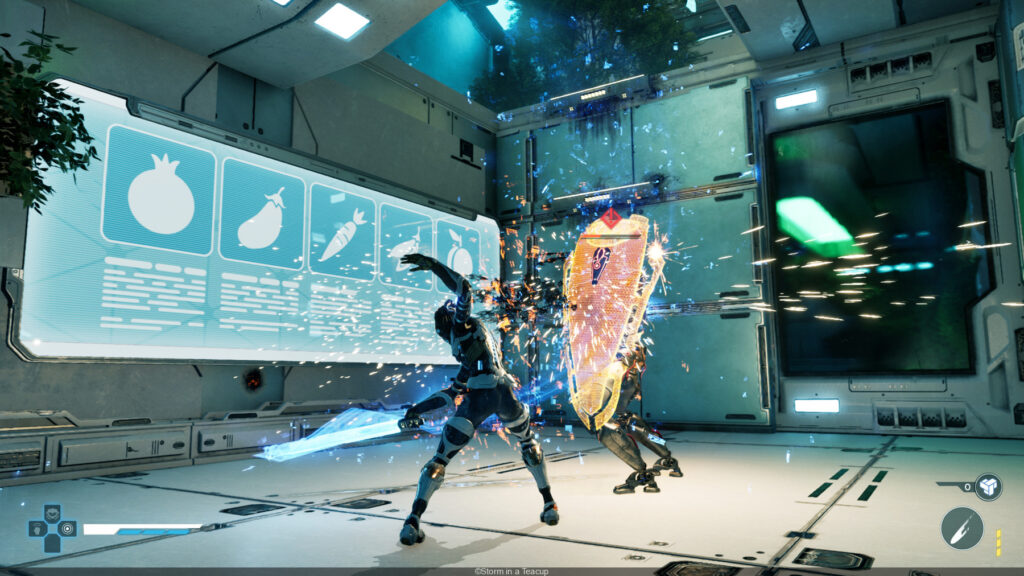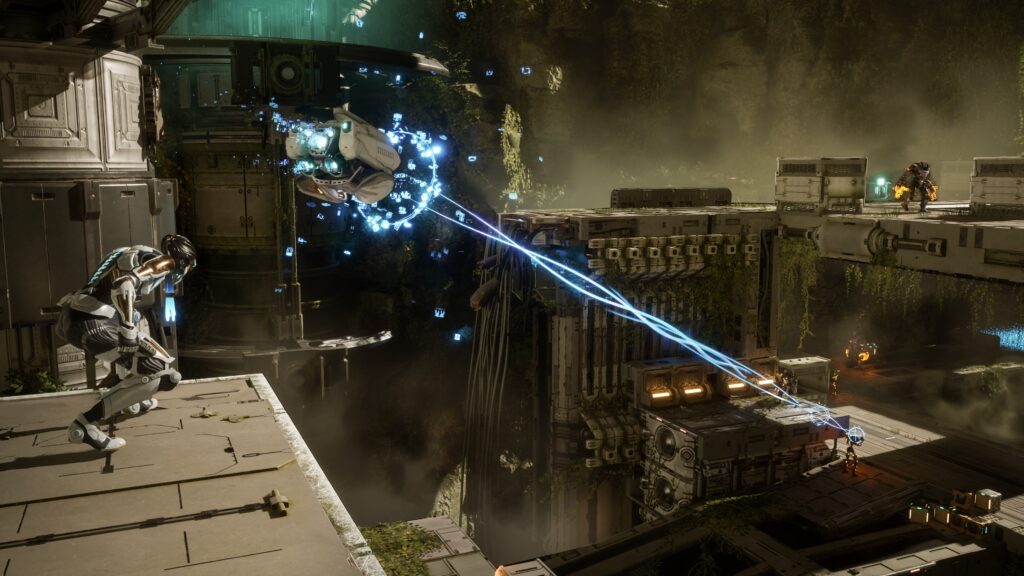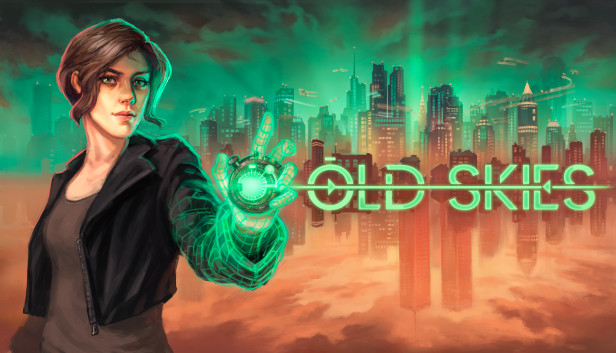
Game Information
| Feature | Details |
|---|---|
| Title | Steel Seed |
| Release Date | 22 April 2025 |
| Platforms | PC (Steam), PlayStation 5, Xbox Series X |
| Developer | Storm in a Teacup |
| Publisher | ESDigital |
| Engine | Unreal Engine 5 |
| Genre | Action-Adventure, Stealth |
In a time when innovation often takes centre stage, Steel Seed boldly leans into nostalgia. Developed by the indie studio Storm in a Teacup and published by ESDigital, Steel Seed presents a solid, cinematic action-adventure experience that wears its influences proudly. If you’ve ever found yourself longing for the thrill of Uncharted’s setpieces or the traversal of Star Wars Jedi: Fallen Order, then Zoe’s journey through a dark, machine-dominated world may be just the ticket.
But with homage comes risk — and Steel Seed walks a fine line between respectful tribute and familiar rehash. Does it manage to carve a space of its own, or does it remain overshadowed by the giants that came before?
Let’s dive in.
Narrative: A Post-Human Puzzle

At the heart of Steel Seed lies a mysterious and occasionally poignant story. The game opens with a surreal moment between Zoe and her father, Dr Archer, before she awakens in an alien-feeling world — one in which she has been transformed into a robotic version of herself. It’s a jarring transition, both for her and the player, but one that quickly kicks off a journey of discovery, guided by a small drone companion named Koby and the enigmatic AI, S4VI.
The post-apocalyptic, machine-ruled underground facility that Zoe explores is equal parts eerie and fascinating. There’s a definite Horizon Zero Dawn vibe to the way the world’s history unravels through cutscenes and optional data logs. While the storytelling doesn’t quite reach the emotional heights of NieR Replicant or the polish of Horizon, it serves its purpose well and is carried largely by Zoe’s personality and dynamic with Koby — who communicates in chirps only Zoe understands.
The voice acting is serviceable, and though the plot occasionally dips into clichés, it remains compelling enough to keep players pushing forward. The emotional hook might not hit as hard as its inspirations, but there’s a sincere attempt to build intrigue and attachment that mostly succeeds.
Gameplay: Familiar, But Effective

The gameplay loop in Steel Seed will be immediately recognisable to fans of the genre. Think platforming and climbing in the vein of Uncharted, light stealth systems akin to The Last of Us, and a pinch of combat variety reminiscent of early Tomb Raider reboots or Jedi: Fallen Order. It’s all here — and it’s mostly enjoyable.
Traversal & Platforming
This is arguably the game’s strongest component. Zoe is a joy to control, with smooth movement and highly responsive platforming. Ledges are clearly marked, and while this does introduce a bit of hand-holding (visually, green highlights often guide your way), it helps maintain momentum. Certain sequences even resemble puzzle-platformers, requiring clever timing and the use of Koby to trigger switches or distract enemies.
It’s not difficult — in fact, experienced players may find most traversal fairly straightforward — but it is consistently engaging thanks to varied environments and strong level design.
Combat: Underwhelming Simplicity
Despite looking like it could lean into Soulslike territory, Steel Seed’s combat is anything but punishing or complex. There’s a basic light and heavy attack system, a perfect dodge mechanic that grants temporary buffs, and a handful of abilities, but there’s little real incentive to experiment. Most encounters can be won through button mashing, with only a few enemy types forcing tactical thinking.
The lack of a stamina bar differentiates it from FromSoftware-style games, but this also removes one of the key elements that usually makes such combat engaging. There’s no real depth here, and that becomes evident rather quickly.
Stealth: Simple but Satisfying
Where combat falters, stealth picks up the slack. While it won’t rival the intricacies of Metal Gear Solid or Dishonored, the stealth in Steel Seed is cleanly implemented and enjoyable. Using Koby to distract foes, hiding behind walls, or exploiting environmental cover adds some welcome tactical variety. Importantly, stealth is optional, offering players the freedom to choose their approach — and rewarding those who embrace the shadows with smoother progress.
The inclusion of stealth also helps break up the pacing, and most areas allow for multiple strategies, a commendable feature for a linear game.
Progression and Customisation
Rather than typical skill trees that unlock through levelling up, Steel Seed ties its progression to in-world performance. By collecting “Glitch” currency and completing contextual challenges — such as tagging enemies or landing perfect dodges — new abilities become available. It’s a refreshingly organic system that never feels grindy, integrating seamlessly into the main campaign.
There’s no loadout management or deep gear system, but that’s a deliberate choice. The focus remains squarely on story and environment over numbers and stats.
Visuals & Performance

Powered by Unreal Engine 5, Steel Seed is a technical showcase in several areas. The environments are atmospheric, vast, and intricately lit, with Lumen tech being used to great effect. The oppressive underground facility pulses with artificial life, and the lighting plays a critical role in both visual storytelling and guiding the player.
While character models aren’t quite cutting-edge, animation work is solid, and the overall presentation holds together nicely. On a high-end PC (tested with an RTX 4080), the game runs effortlessly at 4K with DLSS enabled, averaging over 100 FPS. Frame generation support for newer GPUs is a welcome bonus, and bugs or performance issues are minimal.
Console players, particularly on PS5 and Xbox Series X, will find similarly stable performance, though with minor dips in heavily populated scenes.
Rating Criteria (Scale: 1–10)
Graphics & Art Style – 8/10
Stylish, atmospheric visuals reminiscent of stealth sci-fi games. Strong lighting and environmental design.
Gameplay Mechanics – 7/10
Emphasis on stealth, agility, and tactical movement. Looks promising but not groundbreaking. Concerns about pacing.
Story & Narrative – 7/10
Post-apocalyptic setting with AI and human conflict. Intriguing but still vague.
Sound & Music – 8/10
Great ambient sound design from trailers. Music complements the moody world well.
Innovation & Uniqueness – 6/10
It borrows a lot from established titles like Metal Gear Solid, Horizon, and Inside. Cool but not very original.
Performance & Stability – N/A
Not released, so no real benchmark yet. We’ll skip this in the average to be fair.
Final Thoughts
Steel Seed is not the most groundbreaking game you’ll play in 2025. It doesn’t innovate, and it doesn’t aim to. Instead, it proudly pays homage to the genre’s best — borrowing the cinematic flair of Uncharted, the traversal of Jedi: Fallen Order, and the world design of Horizon Zero Dawn to craft a competent and enjoyable ride.
It’s a bit too safe, and its lack of combat depth or emotional punch holds it back from true greatness. But that doesn’t mean it isn’t worth playing. For fans of narrative-driven, exploration-heavy experiences, Steel Seed offers a dark sci-fi world worth exploring — even if you’ve seen most of it before.
Steel Seed is a well-crafted journey for those who enjoy the familiar comforts of the action-adventure genre. It may not revolutionise the space, but it definitely earns its place within it.





